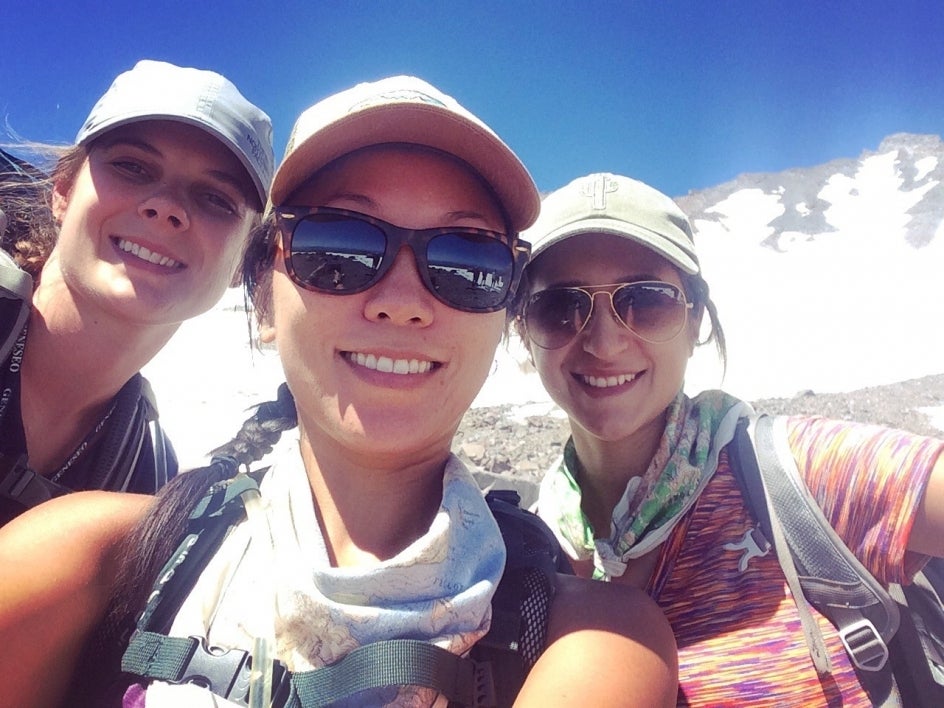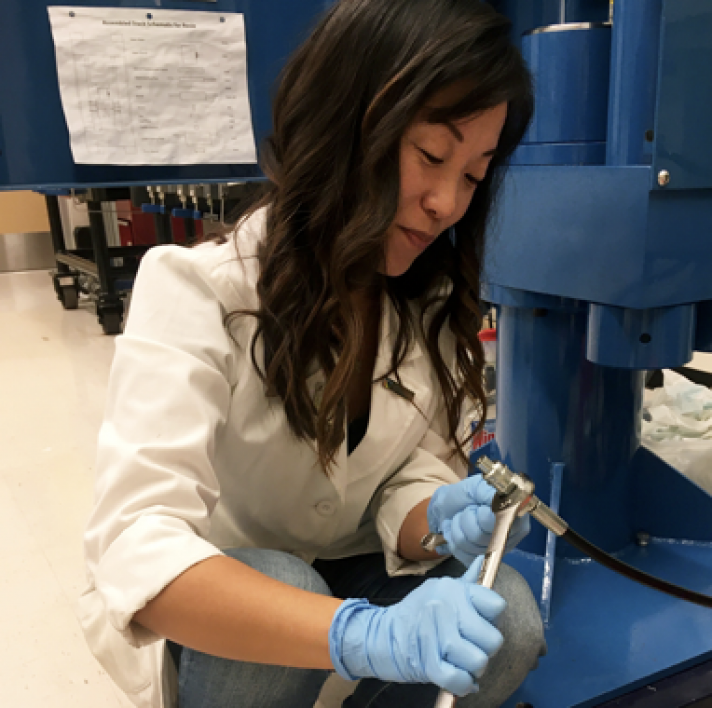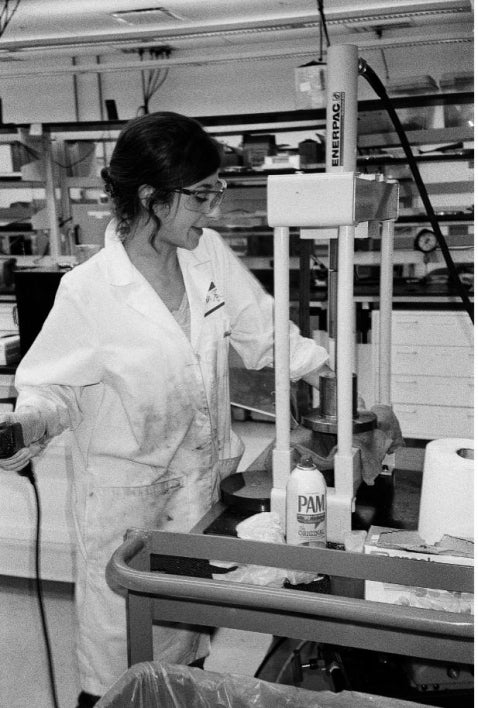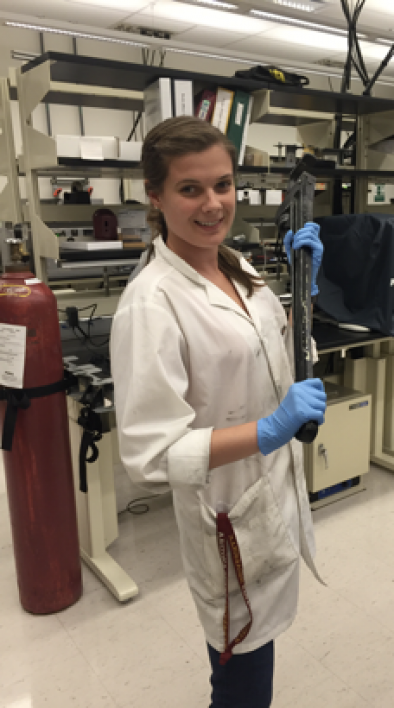An ‘EPIC’ team of scientists graduates from ASU
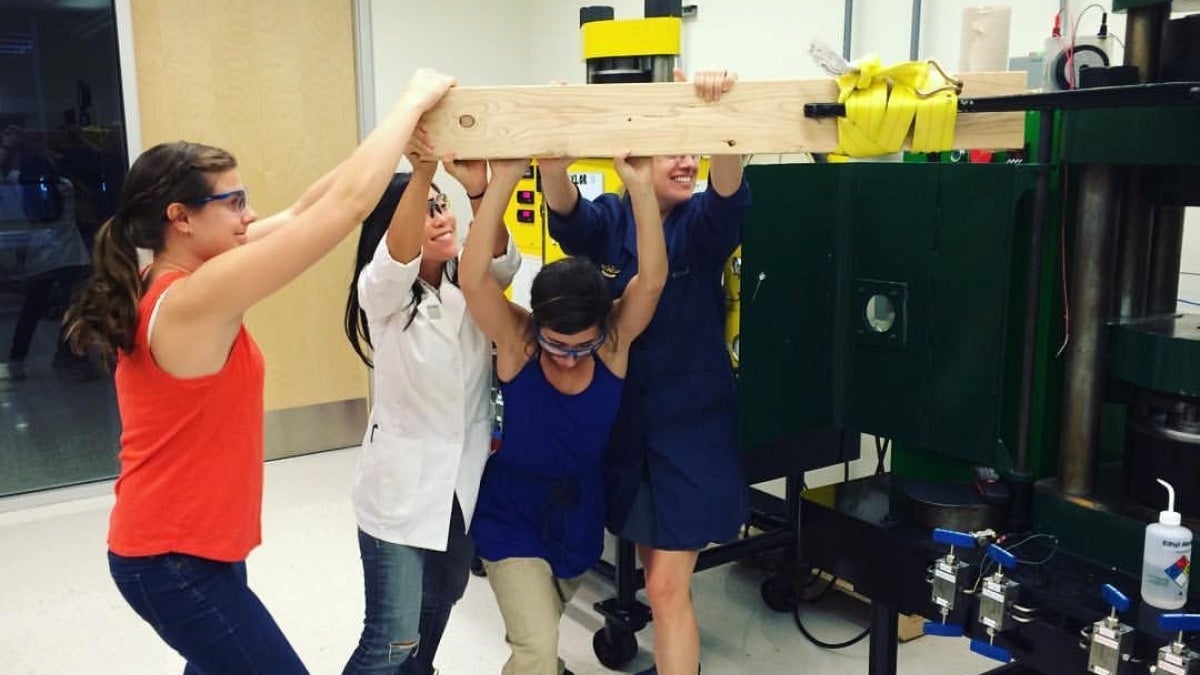
Meghan Guild, Karalee Brugman, Hannah Shamloo and Christy Till fixing the piston cylinder “Hunter” in the School of Earth and Space Exploration EPIC lab. Photo by Mike Huh/ASU
Editor's note: This story is part of a series of profiles of notable spring 2020 graduates.
About five years ago Karalee Brugman, Meghan Guild and Hannah Shamloo chose Arizona State University's School of Earth and Space Exploration for graduate school.
They were impressed by the school’s facilities and the possibility of working with professor and petrologist Christy Till in her Experimental Petrology and Igneous processes Center (EPIC) lab.
This May, all three will be graduating with their PhDs in geological sciences. Throughout their graduate studies, they have worked together, studying magma in the lab and volcanoes in places like Yellowstone National Park, Mount Shasta in the Cascades of California and the Laguna Del Maule volcano in Chile.
“We literally climbed mountains and crossed canyons together to get to this point,” Till said. “It has been my greatest joy and accomplishment in my faculty job so far to be their advisor and watch them grow.”
All three soon-to-be PhDs have bright futures ahead. Brugman will be a postdoctoral scholar at the Carnegie Institution of Science’s Earth and Planets Lab in Washington, D.C.; Guild received funding from the National Science Foundation’s GeoPRISMS program for a postdoctoral fellowship at University of Texas at Austin; and Shamloo will be starting a National Science Foundation postdoctoral fellowship at Oregon State University followed by a faculty position at Central Washington University.
Karalee Brugman
Brugman said she knew she wanted to study geological sciences when she was working in web application development but didn’t feel fulfilled.
“I wanted to change careers and wasn’t sure what to do until remembered how much I had loved rocks and space as a kid,” she said.
Of her adviser, Brugman said, “Christy Till was interested in helping me figure out and achieve my own goals. It was important to me to have an advisor who would be present and supportive.”
In addition to Till, Brugman said Rick Hervig, Dave Williams, Steve Semken and Axel Wittmann had a positive influence on her.
“They are fantastic scientists, as well as being kind, genuine people who lead by example and foster an environment where students feel comfortable and able to be curious without fear of making mistakes.”
Her advice to those still in school is, if you are confused by something, lean into it.
“I didn’t understand some results I was getting with my primary project, and when I investigated I stumbled onto an entire area of research that became my first first-author paper,” she said.
Meghan Guild
Guild first realized she wanted to study geological sciences when, for a school exam, she was asked to describe a rock in a thin section.
“The rock has what we call a poikilitic texture, where one mineral is enclosed in another mineral in an igneous rock,” Guild said. “It all clicked for me in that moment. I could see that these crystals were forming first then this other mineral crystallized around them!”
When asked if there was something she learned at ASU that surprised or changed her perspective, Guild said she learned that interdisciplinary research and collaborations open many doors.
“Collaboration is not always easy, with each discipline speaking their own language, using their own jargon,” she said. “But it makes us more effective communicators and broadens our scientific perspectives in important ways. The interdisciplinary nature of the School has shaped my future research directions and I am a better scientist because of it.”
In addition, Guild said that Till taught her not only about science in the lab and field but also about strategies for time management, building self-confidence and effective science communication.
Her advice for students working on their degrees is that persistence is your friend.
“Nothing you do is always going to be perfect but showing up and trying your best, whatever best means on that day, that’s what you have to do.”
Hannah Shamloo
Shamloo first became interested in geological sciences when she learned about earthquakes in school. “
These events made the Earth seem ‘alive’ so to speak, and I wanted to learn more,” she said.
What Shamloo learned at ASU that changed her perspective is that you don’t have to be an “Einstein-type” to make it in the world of science.
“Coming to ASU I learned that scientists are diverse and well-rounded,” she said. “Many of my scientist friends have other skills and interests such as art, music, dancing, climbing, biking, etc. and we are more than just our science.”
Her advice to those still in school is that graduate school is a marathon, not a race.
“Your strengths and weaknesses will be different than your peers: Embrace this. Being your authentic self will serve as your greatest asset,” she said.
More Science and technology

Podcast explores the future in a rapidly evolving world
What will it mean to be human in the future? Who owns data and who owns us? Can machines think?These are some of the questions…

New NIH-funded program will train ASU students for the future of AI-powered medicine
The medical sector is increasingly exploring the use of artificial intelligence, or AI, to make health care more affordable and…

Cosmic clues: Metal-poor regions unveil potential method for galaxy growth
For decades, astronomers have analyzed data from space and ground telescopes to learn more about galaxies in the universe.…
